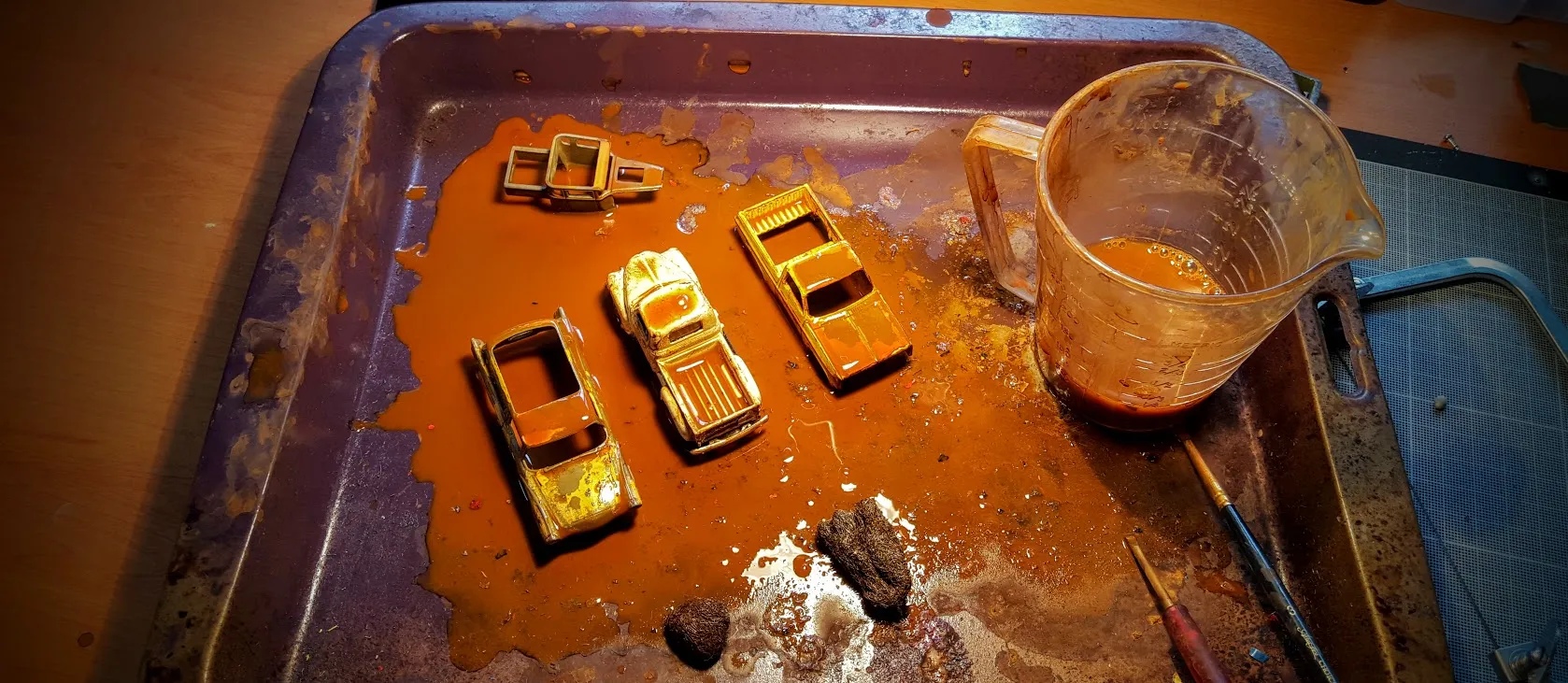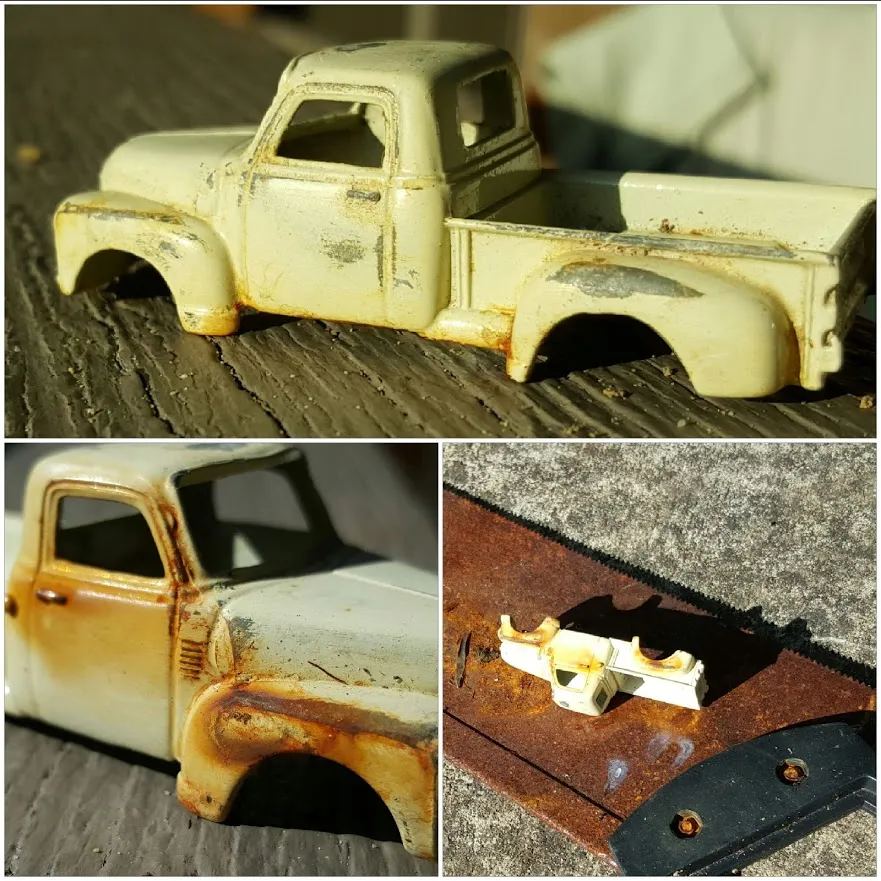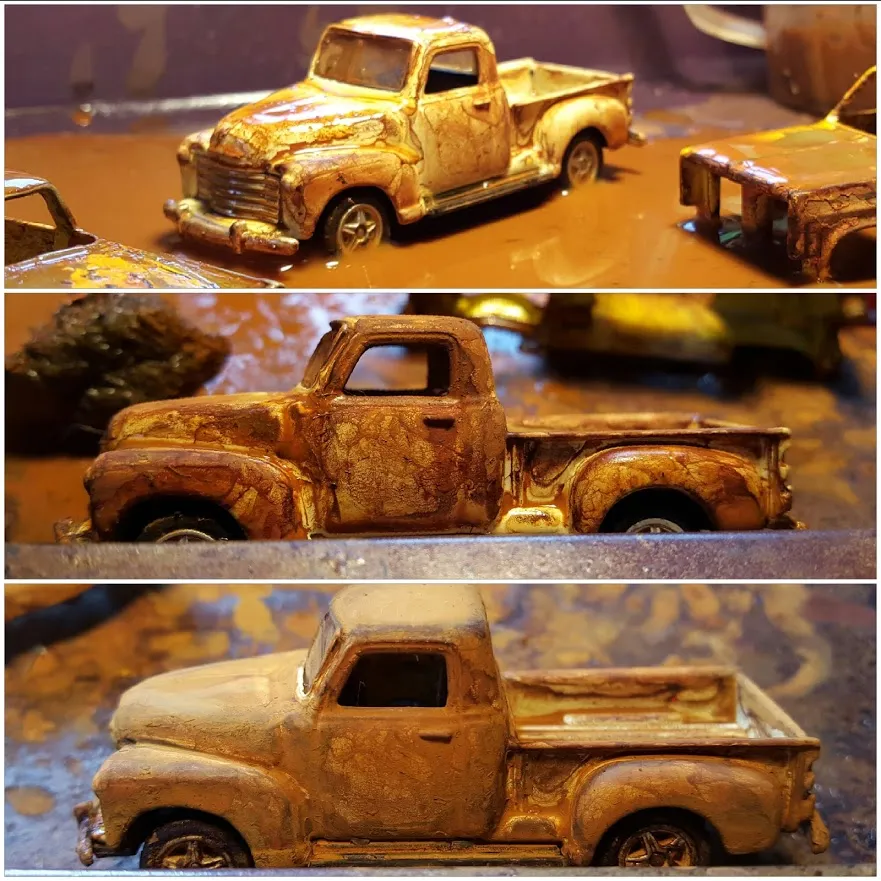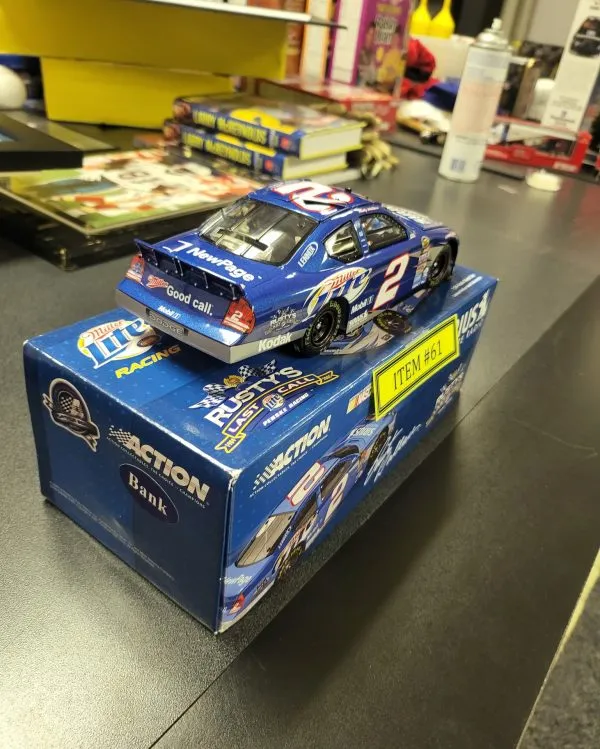Understanding Diecast Rust The Basics
Diecast models are beloved by collectors and enthusiasts alike, cherished for their detail and craftsmanship. However, these miniature marvels are susceptible to a common foe rust. This article explores the world of diecast rust, providing insights into its causes, warning signs, prevention, and restoration. Understanding the nature of rust is the first step in protecting your valuable collection. It’s a process of oxidation that occurs when the metal in diecast models reacts with elements like oxygen and moisture, leading to deterioration. This article will equip you with the knowledge to identify, combat, and preserve your diecast models for years to come.
What is Diecast and Why Does It Rust
Diecast models are typically made from a metal alloy, often zinc, aluminum, or tin, cast into a mold under high pressure. This process allows for intricate detailing. While diecast metal provides durability, it’s not immune to the corrosive effects of rust. The composition of the alloy, exposure to environmental factors, and storage conditions all play a crucial role in the likelihood of rust formation. The presence of even microscopic imperfections or impurities in the metal can accelerate the rusting process. Understanding the material composition and its vulnerabilities is key to proactive preservation.
The Science Behind Diecast Rust

Rust is essentially iron oxide, formed through a chemical reaction. In the case of diecast models, even alloys that don’t contain iron directly can still rust because of other components. The presence of moisture acts as an electrolyte, facilitating the movement of electrons and accelerating the oxidation process. This is why keeping your diecast models away from damp environments is critical. Furthermore, exposure to certain chemicals or pollutants can also speed up the process. The reaction weakens the metal structure, leading to the familiar signs of rust, such as discoloration, flaking, and structural damage. Understanding the scientific principles involved empowers collectors to make informed decisions about care and storage.
Top 5 Warning Signs of Diecast Rust
Identifying rust early is critical for preventing extensive damage to your diecast models. Recognizing the warning signs can help you take immediate action to mitigate the problem. The following are the top five indicators that your models may be suffering from rust.
Visible Rust Spots
This is the most obvious sign. Small, reddish-brown spots appearing on the surface of your diecast models indicate that rust has begun to form. These spots typically appear in areas where the paint or finish has been compromised, allowing moisture to reach the metal. Carefully inspect the entire surface of your models, paying close attention to crevices, joints, and areas where the paint may be thin or chipped. Early intervention, such as cleaning and protective treatments, can often prevent these spots from spreading and causing further damage.
Peeling Paint or Finish

Rust forms beneath the paint, it pushes the paint layer outwards, causing it to bubble, crack, and peel. This is a clear indication that the rust has progressed. Paint peeling not only detracts from the model’s appearance but also exposes the underlying metal to further corrosion. If you notice peeling paint, it is crucial to address the rust problem promptly. This may involve removing the paint, treating the rust, and repainting the model to prevent further deterioration.
Swelling or Blistering of the Metal
As rust expands beneath the surface, it can cause the metal to swell or blister. This can distort the shape of the model, affecting its details and structural integrity. The swelling may be subtle at first, but it can become more pronounced as the rust advances. This is a serious warning sign that requires immediate attention. Carefully examine the model for any signs of deformation, especially around areas prone to rust, such as seams, edges, and joints.
Unusual Odors
A musty or metallic odor can sometimes indicate the presence of rust, even before it’s visible. The chemical reactions associated with rust can release volatile organic compounds (VOCs) that produce a distinct smell. If you detect an unusual odor coming from your display case or storage area, it’s a good idea to inspect your diecast models closely. This can be an early warning sign that something is wrong and may indicate the onset of rust or other forms of degradation.
Difficulty in Movement or Operation

Rust can accumulate in joints, hinges, and moving parts, causing them to become stiff or stuck. If you find that doors, wheels, or other moving components are difficult to operate, it could be a sign that rust is interfering with their function. This can be particularly problematic in models with intricate mechanisms. Careful inspection of moving parts and timely lubrication can help prevent rust from hindering the model’s functionality.
Factors That Contribute to Diecast Rust
Several factors can accelerate the rusting process in diecast models. Understanding these factors is crucial for creating an environment that minimizes the risk of rust and protects your collection. From humidity and storage conditions to the materials used in the models themselves, each of these influences the longevity of your diecast cars.
Exposure to Moisture
Moisture is the primary catalyst for rust. High humidity, condensation, or direct contact with water can all initiate and accelerate the corrosion process. Store your models in a dry environment, and avoid displaying them in areas prone to dampness, such as basements or bathrooms. If you live in a humid climate, consider using a dehumidifier or moisture-absorbing desiccant packs in your display cases and storage areas. Regular monitoring of humidity levels can help to prevent rust before it starts.
Improper Storage Conditions

Improper storage can create a breeding ground for rust. Avoid storing your diecast models in cardboard boxes, attics, or garages where temperature and humidity fluctuations are common. Cardboard can trap moisture and create a humid environment. Ideally, store your models in a cool, dry place away from direct sunlight. Display cases with airtight seals and moisture-absorbing materials can provide additional protection. Proper storage ensures the models remain in pristine condition for years to come, safeguarding your investment and preserving the beauty of each piece.
Presence of Corrosive Substances
Certain substances can accelerate rust formation. Exposure to chemicals, pollutants, and even acidic materials can damage the protective layers of the diecast metal. Avoid storing your models near cleaning products, solvents, or other potentially corrosive materials. Regularly clean your display cases and storage areas to remove dust and other debris. When handling your models, avoid touching them with dirty hands, as oils and contaminants can also contribute to rust formation. By taking precautions to shield your models from harmful substances, you ensure they stay safe and well-preserved.
Age and Quality of the Diecast Metal
The age and quality of the diecast metal can also impact its susceptibility to rust. Older models may have been made with materials that are more prone to corrosion. In addition, the manufacturing processes and the specific metal alloys used can significantly affect the model’s vulnerability. Models made with higher-quality materials and better protective coatings are generally more resistant to rust. When purchasing older models, examine them carefully for signs of rust, and consider the model’s history and construction when assessing its long-term preservation needs.
Preventing Diecast Rust Preserving Your Collection

Preventing rust is easier and more cost-effective than trying to restore a rusty model. Implement preventative measures to protect your collection from the damaging effects of rust. By adopting the following preservation strategies, you can enjoy your diecast models for years to come.
Proper Storage Techniques
As mentioned earlier, proper storage is essential. Store your models in a cool, dry, and well-ventilated area. Use airtight display cases with moisture-absorbing desiccant packs to control humidity levels. Avoid storing models in areas prone to temperature fluctuations. Consider using archival-quality storage boxes or cases designed specifically for collectible items. These boxes often include protective padding and are made from materials that don’t release harmful chemicals. Implementing these storage techniques will help prevent rust and preserve the value of your collection for the future.
Cleaning and Maintenance
Regular cleaning and maintenance are crucial for preventing rust. Gently dust your models regularly using a soft brush or microfiber cloth. Avoid using harsh chemicals or abrasive cleaners that can damage the paint or finish. If a model gets wet, dry it immediately with a soft cloth. You can also apply a thin coat of wax specifically designed for model cars, which helps to protect the surface and prevent rust. Regular cleaning will remove dust, dirt, and other contaminants that can contribute to corrosion.
Using Protective Coatings

Applying protective coatings can provide an extra layer of defense against rust. There are various products available, including clear acrylic sealants and wax-based protectants designed for model cars. These coatings create a barrier between the metal and the environment, protecting against moisture and other corrosive elements. Carefully follow the manufacturer’s instructions when applying any protective coating. Reapply the coating periodically to maintain its effectiveness. This is an excellent way to prolong the life and beauty of your diecast models.
Regular Inspection
Regular inspection is key to detecting rust early. Inspect your models periodically, paying close attention to potential trouble spots, such as joints, seams, and areas where the paint may be thin. Look for any signs of rust, such as spots, peeling paint, or swelling. If you find any rust, take action immediately. Catching rust early can prevent it from spreading and causing extensive damage. By consistently checking your collection, you can address issues promptly, preserving the value and beauty of your diecast models.
Restoring Rusty Diecast Models
If you discover rust on your diecast models, don’t despair. Although it can be a complex process, restoration is often possible. It requires careful planning, the right tools, and a bit of patience. The following are the basic steps involved in restoring a rusty diecast model.
Assessing the Damage

Before you start any restoration work, carefully assess the extent of the damage. Determine the severity of the rust, the areas affected, and the overall condition of the model. Take photos before beginning the restoration to document the process. This will help you to track your progress and identify any challenges. If the rust is extensive or the model is severely damaged, you may want to consult a professional restorer. This evaluation will inform your approach and help you determine the best course of action for successful restoration.
Cleaning Methods
There are several methods for removing rust from diecast models. The best approach depends on the severity of the rust and the type of model. Start with the gentlest methods, such as gently scrubbing the affected areas with a soft brush and a mild cleaning solution. For more stubborn rust, you may need to use a specialized rust remover designed for metal. Always test any cleaning solution on a small, inconspicuous area of the model first to ensure it doesn’t damage the paint or finish. After cleaning, thoroughly rinse and dry the model to prevent further corrosion.
Repainting and Finishing
After the rust is removed, you’ll likely need to repaint the affected areas. This can be a challenging process that requires precision and patience. Match the original paint color as closely as possible. You may also need to reapply the clear coat to protect the paint and give the model a polished finish. If you are not comfortable with painting, you can consider having your models professionally restored. Professional restoration can ensure that your model is restored to its original condition and helps preserve its value.
In conclusion, diecast rust is a common issue, but with the right knowledge and care, you can protect and preserve your valuable collection. By understanding the causes, recognizing the warning signs, and implementing preventative measures, you can keep your models looking their best for years to come. Regular inspection, proper storage, and timely cleaning are essential. Remember, early detection and action are the keys to successful rust prevention. By following the tips outlined in this article, you can ensure that your diecast models continue to bring you joy and remain a cherished part of your collection.
